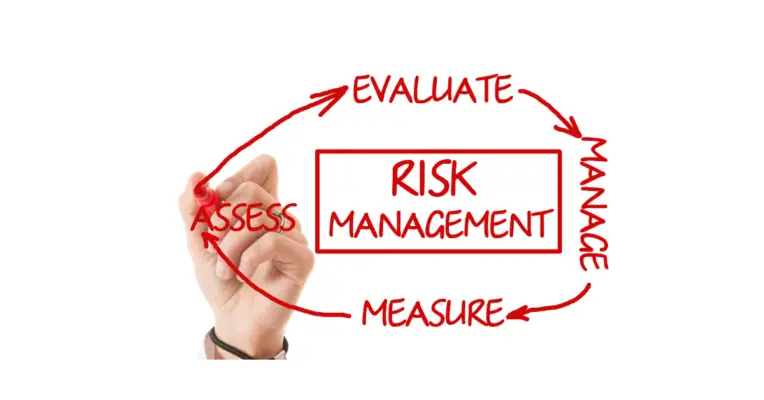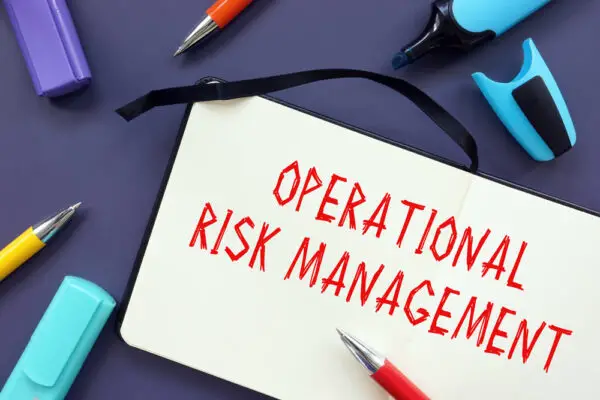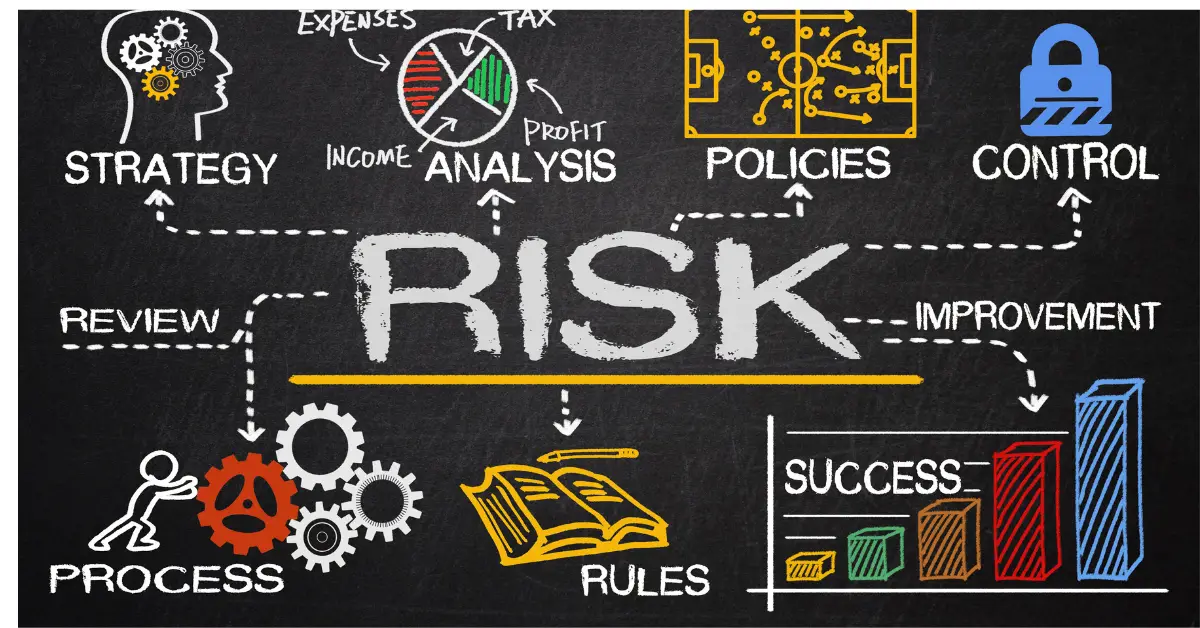Risk management integration is beneficial for enterprise risk management for several reasons. By integrating risk management into all aspects of the organization, from strategic planning to daily operations, organizations can more effectively identify and manage risks.
Additionally, by involving all employees in risk identification and mitigation efforts, organizations can create a corporate culture that is aware and responsive to risk. Finally, integrated risk management allows organizations to better assess and respond to changes in the business environment.
Embark on a journey through the “9 Ways Risk Management Integration is Beneficial for Enterprise Risk Management (ERM)” in this comprehensive guide. Delve into the numerous advantages of integrating risk management within your organization’s core business processes and decision-making, from enhancing strategic planning to improving resource allocation.
Gain insights into how a holistic approach to risk management can boost stakeholder confidence, foster resilience, and drive business growth. Equip yourself with the knowledge and strategies to transform your organization’s risk management capabilities and pave the way for long-term success.
Risk management integration is a process that allows organizations to combine and standardize their risk management practices across all departments. This can be beneficial for enterprise risk management (ERM) initiatives definition integrated risk management solutions, as it allows organizations to more easily identify, assess, and mitigate risks.
In today’s fast-paced business world, the importance of integrated risk management cannot be overstated. An integrated risk management application enables organizations to effectively identify and manage risks that could potentially harm their strategic and operational objectives.
Every organization has a unique set of risks, but by integrating risk mitigation strategies into their risk management procedures, they can minimize the likelihood of negative outcomes. The use of an integrated risk management application allows for real-time tracking of risk actions and enables proactive responses to potential risks
As organizations continue to grow, they must embrace an integrated risk management approach and integrated risk management program to protect against potential threats. Integration risk meaning refers to the process by which critical data, systems and operations are connected within an organization.
Integrated risk management solutions provide organizations with an integrated approach to managing risk. This can involve implementing a comprehensive and holistic risk management program covering all business areas, from operations to compliance.
Risk mitigation is an important part of integrated risk management, as it helps organizations identify risks before they become critical issues and implement strategies to reduce their impact.
This is where integrated risk management application and software, as well as integration risk management consultants come into play. The primary goal of these measures is to ensure that all risks are properly assessed and managed so that a risk aware culture may be cultivated within the organization. Furthermore, third party risk management enables organizations to identify and manage any associated risks, through risk assessments thus mitigating potential consequences from both internal and external sources.
Organizations will be able to make great strides in the enterprise risk management framework. The goal of risk management integration is to ensure that all risks are identified and that the most effective response can be put into place.
Risk management integration can help organizations standardize their risk assessment processes, communication protocols, and decision-making practices. This will help to ensure that risks are identified and managed in a consistent manner across all departments.
The consistent manner depicted in enterprise risk management policy and the various risk manuals. There are also a number of risk manuals that guide the implementation of risk management processes. Standard operating procedures have also been created to streamline the management of specific types of risks.
The board and management team’s approach to risk is holistic and consistent. Corporate culture supports risk identification, assessment, and response processes. The organization has documented policies, procedures, and practices for assessing, managing and reporting risks. Assisting integration of risk management in the organization. The risk management lifecycle follows the same ways of risk management standards.
The effectiveness of the organization’s risk management processes is regularly assessed. The board and management team receive reports on the effectiveness of risk management processes, which helps to ensure that risks are being properly managed. Risk identifcation is the first step in the risk management process. Athough there are five steps in the risk management process.
In this blog post, we will explore nine ways in which risk management integration can benefit ERM initiatives.
What is Integration Risk Management?
Integration risk management is the process of identifying, assessing, and responding to risks associated with the integration of new software or hardware into an organization’s information technology infrastructure. It includes the development and implementation of risk management plans, policies, and procedures to ensure that the risks associated with integrating new technology are identified and managed.
Integration risk management is important because it helps organizations manage the risks associated with integrating new technology into their infrastructure. By identifying and assessing these risks, organizations can take steps to mitigate or avoid them, which can help minimize disruption to business operations and protect sensitive data.
Integration risk management is also important from a compliance perspective. Many organizations are required to comply with government regulations such as the Health Insurance Portability and Accountability Act (HIPAA) and the Payment Card Industry Data Security Standard (PCI DSS), which require them to take steps to protect sensitive data.
Integration risk management can help organizations meet these compliance requirements by ensuring that the risks associated with integrating new technology into their infrastructure are identified and managed.
Of course, ,Integrated risk management consultant is a professional who helps an organization manage risk. Risk managers are responsible for implementing integrated risk management processes within an organization in order to identify, assess, and mitigate risks. Risk and compliance functions are important in order to ensure that the organization is compliant with any applicable laws and regulations.
Risk mitigation is key in order to protect the organization from potential losses. Finally, it is important to assess the risk ownership within an organization in order to identify who is responsible for each risk. The only integrated risk management approach is through enabling risk mitigations to be closed on time.
An integrated risk management system is a comprehensive approach to risk management that takes into account all aspects of risk within an organization. An integrated risk management program will include the identification, assessment, and mitigation of risks, as well as regular monitoring to ensure that risks are kept under control.
The benefits of an integrated risk management system include improved decision making, reduced costs, and a better understanding of overall risk.
An integrated risk management approach is one in which all potential risks are considered when making decisions. This can include risks to people, property, the environment, and the company’s reputation.
An integrated risk management solutions can help to identify and assess these risks, and then develop strategies to mitigate or avoid them. An integrated risk management strategy can help a company be better prepared for any potential disruptions, and can improve overall risk management practices.

How Do you Implement Integrated Risk Management?
Integrated risk management (IRM) is the process of coordinating risk management activities across an organization to prevent, mitigate, and respond to risks that could affect business objectives. IRM is a strategic process that should be aligned with an organization’s overall business strategy. There are three steps in the IRM process:
1. Risk identification
Risk identification is the process of identifying risks that could affect an organization’s business objectives. Risks can come from a variety of sources, including internal and external factors, and can be classified as strategic, operational, or compliance risks. The goal of risk identification is to identify all potential risks and get a complete picture of the risks that could affect the organization.
Risk assessment is the process of assessing the likelihood and impact of each risk identified in step 1. The goal of risk assessment is to prioritize risks so that those with the highest likelihood and impact can be addressed first.
Risk Mitigation through risk management plans and strategies that will prevent, mitigate, or respond to identified risks. The goal of risk management is to reduce the likelihood and impact of risks on business objectives.
An effective IRM process integrates risk management activities across the organization and aligns them with the overall business strategy.
There are several key components of an effective IRM program:
- Leadership commitment and support. Senior management must be committed to and support the IRM process.
- Risk governance framework. A risk governance framework provides guidance on how risks will be identified, assessed, and managed.
- Risk assessment methodology. A risk assessment methodology is used to assess the likelihood and impact of risks.
- Risk response plan. A risk response plan includes plans for preventing, mitigating, and responding to risks.
- Risk communication plan. A risk communication plan ensures that risk information is communicated to the right people in a timely manner.
- Training and awareness. Employees must be trained on how to identify, assess, and respond to risks.
Why Integration of Risk Management is Important for an Organization?
Integrated risk management is important for an organization because it allows the organization to have a holistic view of all the risks that it faces. This allows the organization to put in place measures to mitigate or manage these risks.
Risk management is not a one-time event, it needs to be an ongoing process in order to be effective. By integrating risk management into all aspects of the organization, the organization can be more resilient in the face of risk.
Risk management is not just for large organizations, it is also important for small businesses. Small businesses may not have the same resources as larger organizations, but they can still manage risk by using a risk-based approach. A risk-based approach allows small businesses to focus their resources on the risks that are most important to them.
There are many benefits to integrating risk management into an organization. Some of these benefits include:
- Improved decision-making.
- Better communication and coordination among different departments.
- Increased awareness of risks and how to mitigate them.
- Improved organizational resilience.
- It ensures that an organization is aware of potential risks and can put in place measures to avoid or mitigate them.
- Risk management helps an organization allocate its resources in the most effective way possible so that it can minimize losses in the event of a risk occurring.
- By identifying and assessing risks, risk management helps organizations to be better prepared for potential problems and to react more quickly and effectively when they do occur.
- An effective risk management program will help to ensure compliance with regulations and improve overall organizational performance.
Integrated Risk Management Plan
An integrated risk management plan is an important tool for any organization. It allows for the systematic identification, assessment, and control of risks. By integrating risk management into all areas of the organization, the plan can help ensure that risks are considered and managed throughout the organization.
The first step in creating an integrated risk management plan is to develop a risk management policy. This policy should outline the organization’s approach to risk management and identify the individuals responsible for carrying out the various tasks. The policy should also specify the types of risks that will be considered and how they will be managed.
Once the policy is in place, the next step is to identify and assess the risks faced by the organization. This should be done on a regular basis, and the results should be documented in a risk register. The risk register should include information on each risk, such as its likelihood and impact, as well as the steps that have been taken to mitigate it.
The final step is to put the plan into action. This includes implementing the policies and procedures outlined in the policy and ensuring that everyone in the organization is aware of their role in risk management. By following these steps, an organization can create an integrated risk management plan that will help them manage and control risks.
When creating a risk management policy, it’s important to include all of the different types of risks that could be faced by the organization. Some of the most common types of risks include:
– Financial risks: These risks include the potential for loss of money or assets.
– Health and safety risks: These risks can include injuries to employees or members of the public, as well as health and safety hazards.
– Environmental risks: These risks can include damage to the environment or disruption to natural ecosystems.
– Reputational risks: These risks can include damage to the organization’s reputation or loss of customer trust.
– Legal risks: These risks can include fines, lawsuits, or other legal penalties.
– Technological risks: These risks can include data breaches or disruptions to IT systems.
The risk management policy should outline how each of these types of risks will be managed. It’s important to have a plan for each type of risk, as each one can have a different impact on the organization.
By integrating risk management into all areas of the organization, an integrated risk management plan can help ensure that risks are considered and managed throughout the organization. This can help to protect the organization from potential losses and ensure that they are able to continue operations in the event of a risk event.

Integrated Risk Management Framework
An integrated risk management framework is important for any organization because it helps identify, assess, and manage risks in a holistic and coordinated manner. The framework should be tailored to the specific needs of the organization and should include processes and procedures for identifying, assessing, and responding to risks. It should also include mechanisms for monitoring and reviewing the effectiveness of the risk management process.
One key component of an effective risk management framework is a risk assessment process. This process should involve the identification of potential risks, the assessment of the likelihood and severity of those risks, and the development of strategies to mitigate or respond to those risks. Risk assessments should be conducted on a regular basis and should be updated as new information becomes available.
Another key component of an effective risk management framework is a risk response plan. This plan should include procedures for responding to risks that have been identified through the risk assessment process. The plan should also include procedures for dealing with emergencies and unexpected events.
A good risk management framework will also include mechanisms for monitoring and reviewing the effectiveness of the risk management process. This includes tracking the progress of risk mitigation strategies, assessing the impact of risks on the organization, and evaluating the overall effectiveness of the risk management framework.
The benefits of an effective risk management framework include:
- Improved organizational efficiency and effectiveness.
- Reduced exposure to risk and liability
- Increased compliance with safety and security regulations
- Increased confidence among stakeholders
- improved communication and coordination within the organization.
9 Ways RISK MANAGEMENT INTEGRATION is beneficial for ERM
-
- Offers combined assurance services:- It helps ensure that different risk management functions are aligned and working together towards the organization’s risk management goals.
- Data aggregation:-It helps identify and assess risks more effectively by integrating information from different data sources.
- Holistic View:- It facilitates better and faster decision-making by providing a holistic view of risks across the enterprise.
- The internal control framework:-It strengthens control processes by identifying gaps and overlaps in risk controls.
- Enhances Communication:-It enhances communication and coordination among risk management, senior management, and other key stakeholders.
- Reporting:-It improves reporting on risks and performance against risk objectives
- Continuous Improvement:- It drives continuous improvement in risk management practices
- Compliance:- it enables organizations to more easily meet compliance requirements
- Information security:- enhances the overall security of an organization’s information systems and data.
Conclusion
In conclusion, risk management integration offers many benefits for organizations seeking to improve their ERM program. By aligning different risk functions and integrating data from different sources, decision-makers can get a faster, more holistic view of the organization’s risks. This allows them to make better decisions quickly and effectively. Additionally, the internal control framework is strengthened by identifying gaps and overlaps in controls. Integrating risk management into your organization can help you achieve these important goals. Have you seen success in implementing RISK MANAGEMENT INTEGRATION in your organization? If so, please share with us in the comments below.
Have you read?
The only integrated risk management approach
How to develop an enterprise risk management framework
Best integrated risk management practices
Best third party risk management guide
How to set up a great enterprise risk management framework
Enterprise risk management archives

Chris Ekai is a Risk Management expert with over 10 years of experience in the field. He has a Master’s(MSc) degree in Risk Management from University of Portsmouth and is a CPA and Finance professional. He currently works as a Content Manager at Risk Publishing, writing about Enterprise Risk Management, Business Continuity Management and Project Management.

